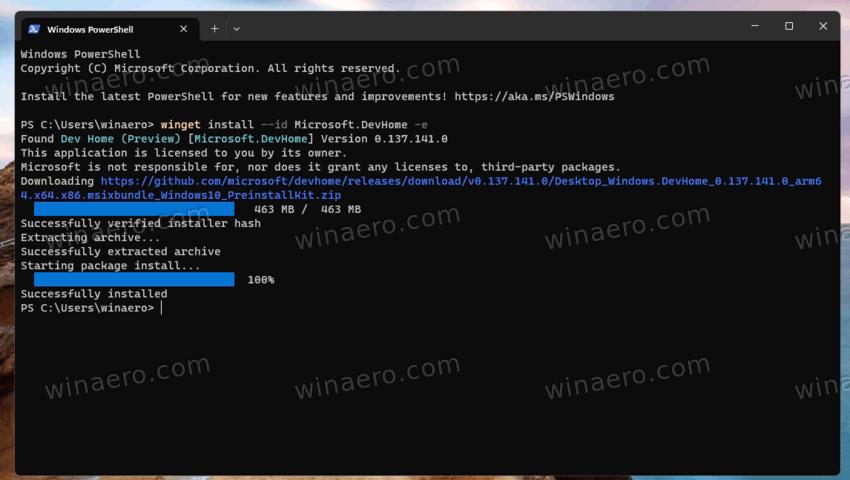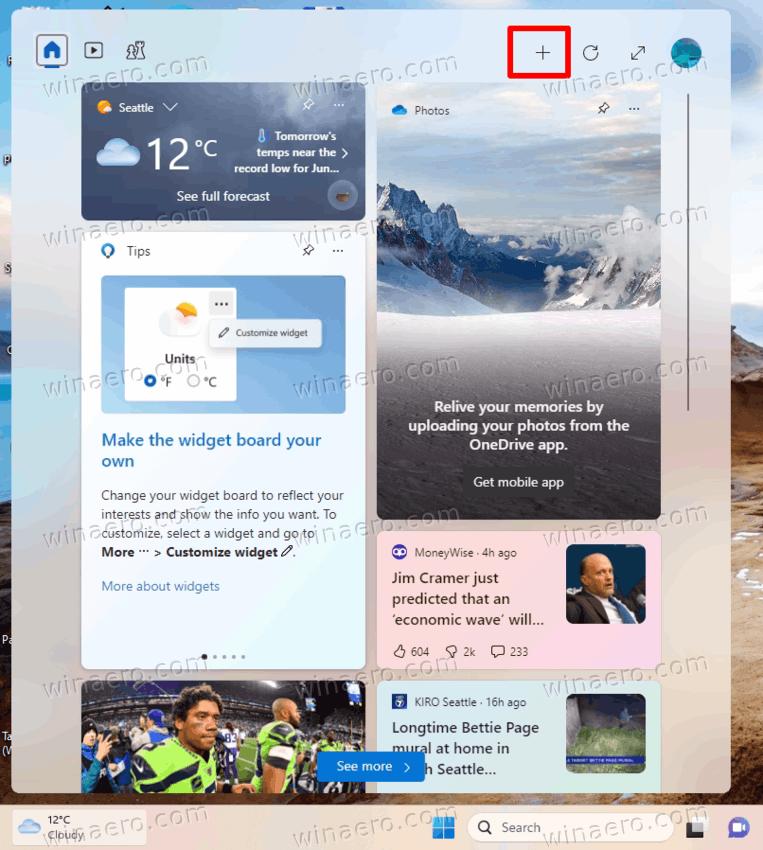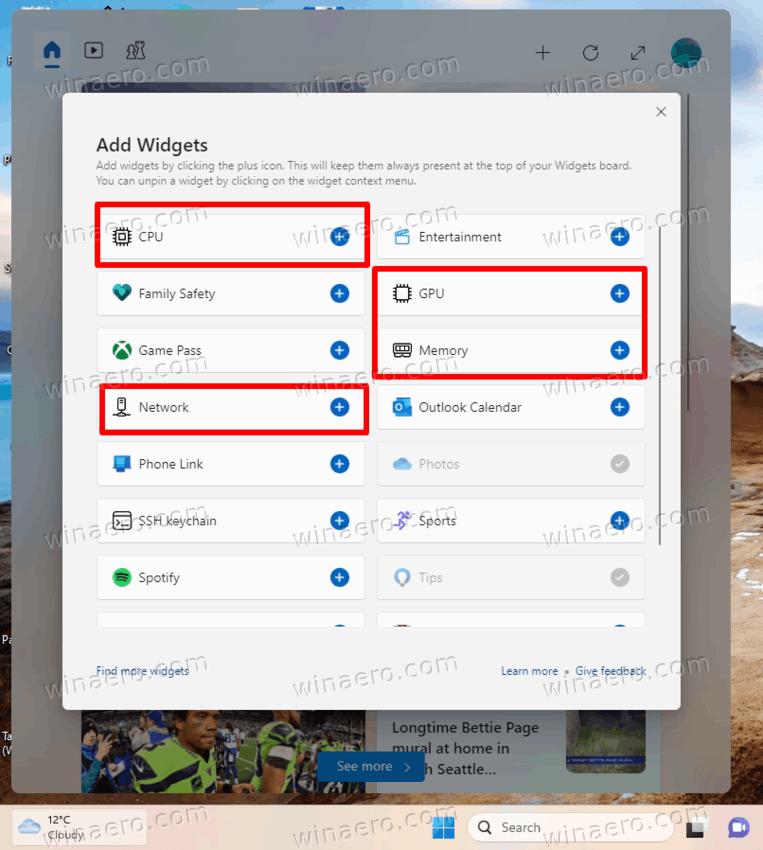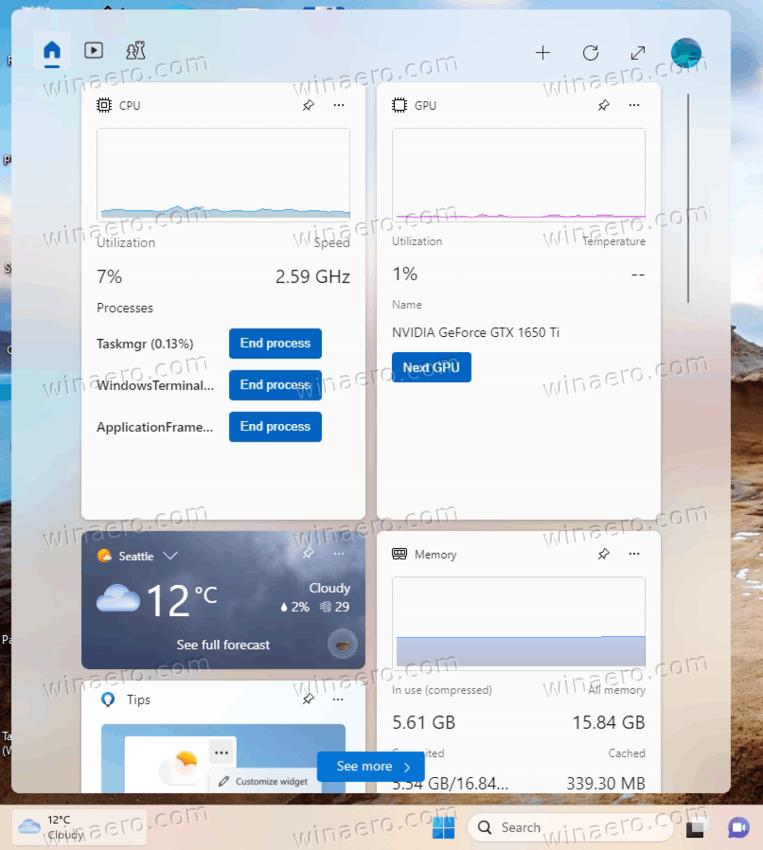The new GPU, RAM, Network and CPU widgets are part of the new Dev Home app, that allows you to monitor system resources from the Widgets pane. Currently, there are only four of them, but more may come in the future.
Advertisеment
Widgets is a new feature of Windows 11 that runs mini-apps in a panel that you can open with a click on the icon in the taskbar. There is also a hotkey, Win + W, and an option to open them on mouse over. In addition to the panel, they appear in the taskbar as a leftmost block of dynamic info, e.g. weather forecast or stock information.
The Widget pane mixes app-specific information with a news feed. It supports thirty-party modules, so some of the Store apps like Spotify and Messenger provide their own custom widgets. Microsoft also extends the number of first-party apps that supports adding mini apps to the panel. For example, Phone Link has its own widgets.
Similarly, the recently announced Dev Home app provides three extra widgets. They allow you to monitor resource usage by the OS and apps. The app itself is a dashboard that targets developers. It simplifies deployment winget apps with a GUI, allows cloning GitHub repos and creating a Dev drive optimized for performance. The app supports extensions, so it can easily receive more features (and more widgets!).
So, to get the resource monitoring widgets, you have to install the Dev Home app. It is available in the Microsoft Store, on GitHub, and via winget. In this tutorial, I will use winget. Do the following.
Add CPU, Memory, Network and GPU Widgets
- Right-click the Start button, and select Terminal from the menu.
- Type the following command, and hit Enter :
winget install --id Microsoft.DevHome -e. Wait for winget to finish installing the Dev Home app.
- Now, open the Widgets board, e.g. by clicking the forecast in the Taskbar, or by pressing Win + W. Click on the Plus button at the top right side.

- You'll find the new widgets listed. Click the blue plus button for each of them to add them.

- Voila, the new widgets now reside in the pane.

The new Widgets are pretty useful. For example, the CPU widget shows three most resource-heavy apps. They all show a graph, that allows you to check GPU, CPU and RAM usage in time.
Nevertheless, these Widgets are more for fun than for serious resource monitoring. The Task Manager offers a cleaner UI for the same on its Performance page. It also has a priority over regular progresses. If your OS is busy, the Task Manager will open anyway, and Widgets will not. You can also turn it into a desktop widget. Also, the Resource Monitor snap-in for mmc offers more options and filters. Finally, there are plenty of third-party tools that you can use more efficiently to monitor your software and hardware. You can start with SysInternals Process Explorer.
Anyway, the addition of these widgets is a welcome change.
Support us
Winaero greatly relies on your support. You can help the site keep bringing you interesting and useful content and software by using these options:
